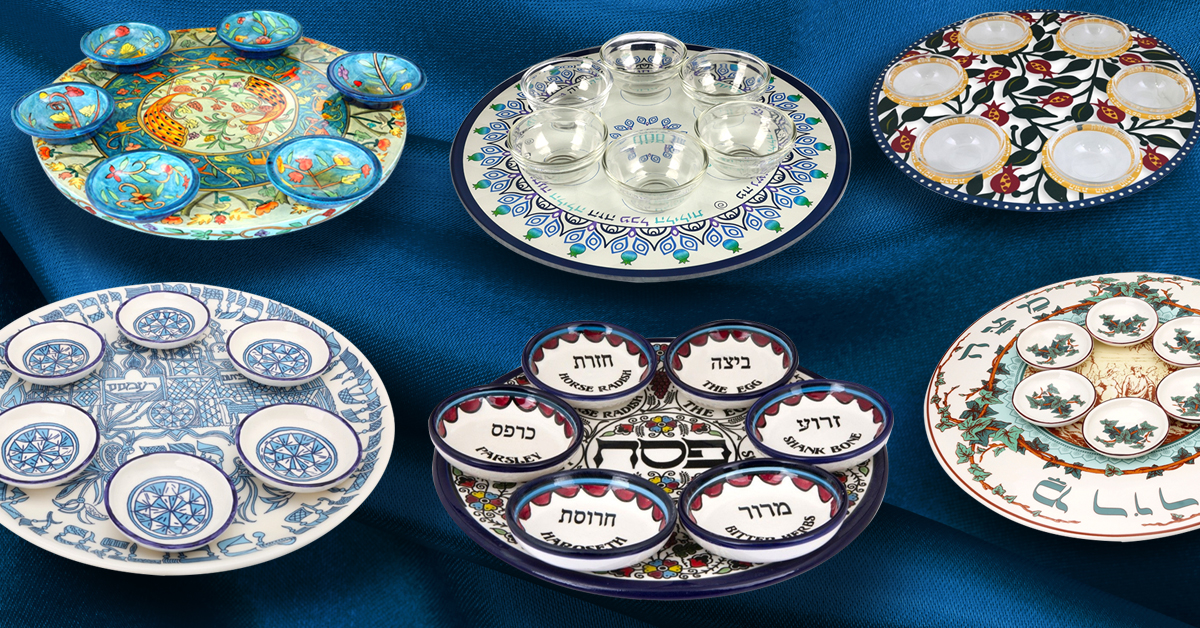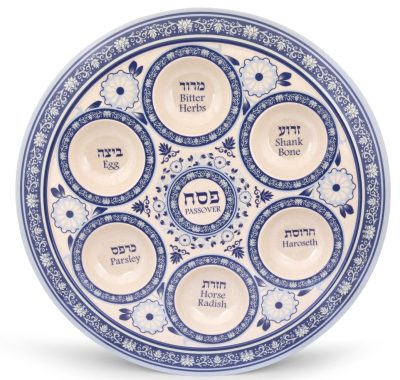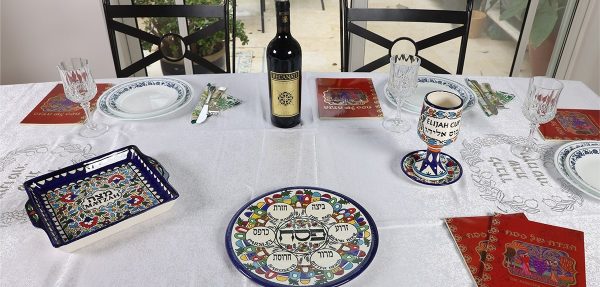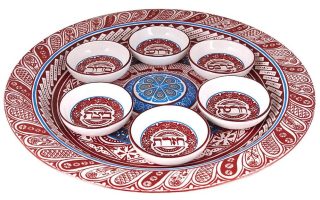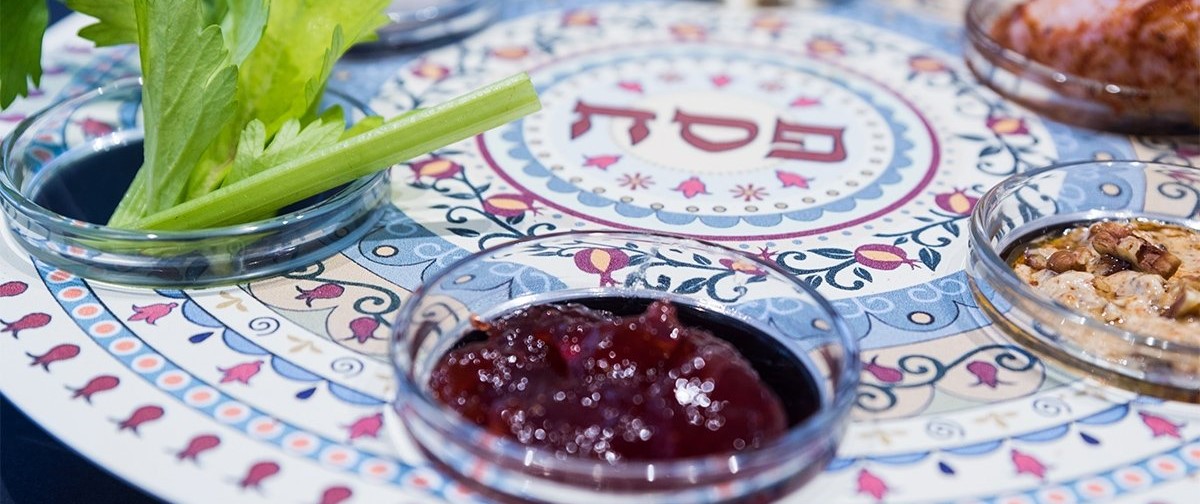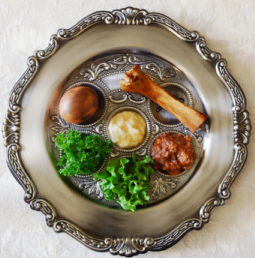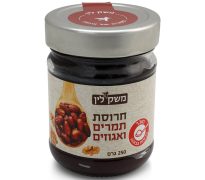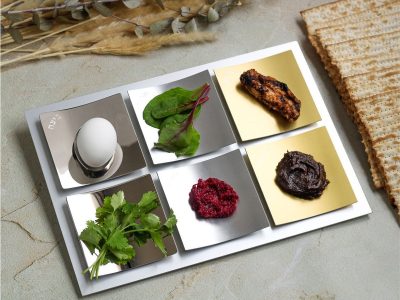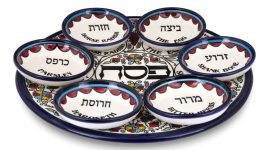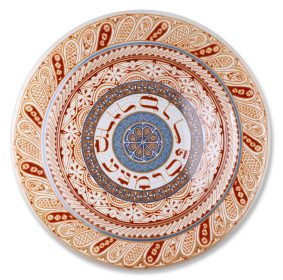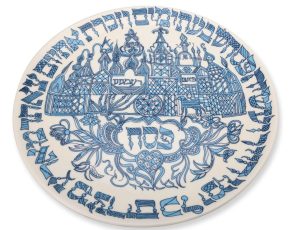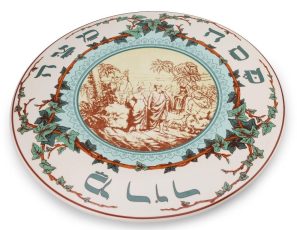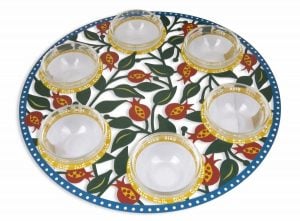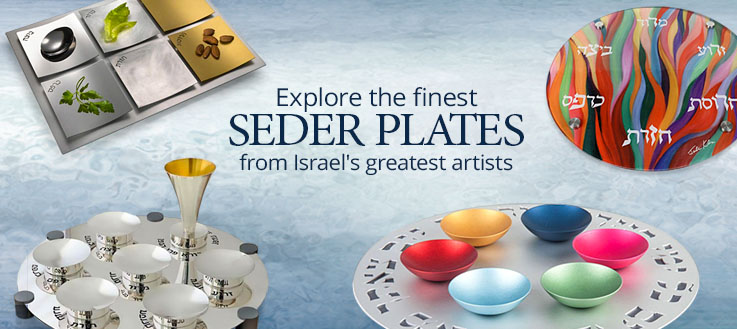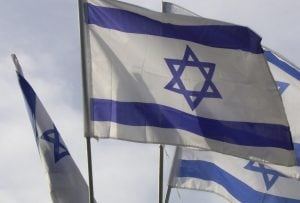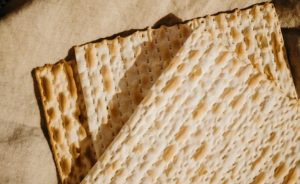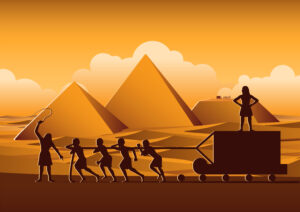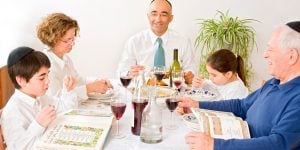Passover is almost here! We’re bringing you a series of informational articles and guides to answer all your questions and help with your Passover prep. Be sure to sign up for our emails over on our main site to get all our top content and promotions, and check out our Passover gifts category for all your Passover needs!
The Seder plate is the centerpiece of every Passover table and one of the most important items of the Seder itself, containing six symbolic foods that help us tell the Passover story.
Let’s dive in to the special meaning of all the Seder plate items, as well as the history of the Seder plate and when it was invented!

The Shankbone symbolizes the Passover sacrifice (also known as the Paschal Lamb) that Jews previously brought to the Temple on the first night of Passover. Since the Temple was destroyed and Jews can no longer bring sacrifices and fulfill that commandment, the shankbone on the plate serves as a visual reminder of the sacrifice.
The Egg, meanwhile, signifies our deep sadness that the Temple no longer stands. Eggs are used because they were traditionally the first food served to mourners after a funeral.
Some people also view the egg as symbolizing spring and rebirth.
The two types of Bitter Herbs (usually lettuce and horseradish) represent the bitterness of slavery endured by the Israelites in Egypt.
The Charoset, a sweet fruit and nut paste, represents the mortar and brick that the Israelites labored with while they were enslaved.
Karpas is the vegetable we use to dip into saltwater (or vinegar, in some customs). The fresh vegetable – most commonly parsley, potato, or celery – symbolizes the coming spring season, while the saltwater reminds us of the tears and pain of our enslaved ancestors.
Some aspects of the Passover Seder come from the Torah, like eating matzah and retelling the story of the Exodus from Egypt, while other customs can be traced back to the Talmud, including the idea of symbolic foods in place of the lamb sacrifice that can’t be performed without the Temple.
However, it is unclear when Jews started using special designated Seder plates the way we know them today. The only hint we have is that the oldest known Seder plate artifact, currently housed at the Israel Museum, comes from late 15th-century Spain, just before the expulsions of Jews in 1492.
So we know that the tradition of having a designated, artistically decorated plate for the symbolic Passover foods is at least a few centuries old!
You can get in touch with Jewish history in a poignant way with your very own historic Seder plate reproduction from the Israel Museum.
Upgrade your Passover table in style with our beautiful Israeli-made Seder plates! And don’t forget all the other Passover Judaica and gifts you’ll need, right in our store.
Whatever your style or budget, we have the perfect Seder plate for you from one of Israel’s finest artists. Check out our guide with our top 10 amazing plates and find your favorite!
